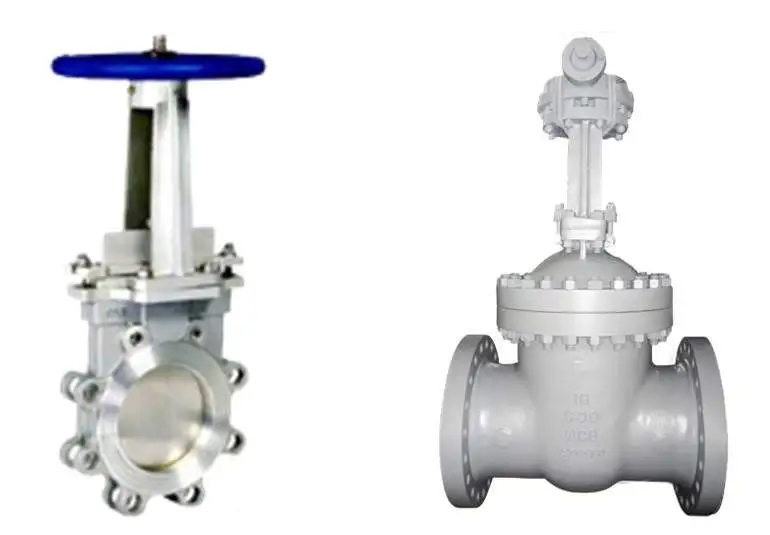
Structure
Knife gate valves: The key feature of a knife gate valve is its blade shaped valve disc, which is similar to a blade. When the valve is opened, the blade is lifted from the middle of the valve body, allowing the medium to pass through. The blade is controlled by manual, electric, or pneumatic devices.
Gate valves: The valve disc of a gate valve is a flat or rectangular gate structure, which is called a wedge. When the valve is opened, the wedge moves vertically up and down, achieving fluid flow through the guide groove in the valve body. Gate valves usually adopt a lifting structure, which controls the lifting of the gate plate through manual, electric, or pneumatic devices.
Applications
Knife gate valves: they are commonly used to treat conditions containing solid particles, fibrous substances, or viscous media, such as sewage treatment, mining, papermaking and other industries due to its excellent cutting performance and clean sewage discharge capacity.
Gate valves: a gate valve is mainly used for connecting and cutting off fluid, which is suitable for general fluid control, such as petroleum, chemical, power, metallurgy and other industries.
Sealing performance
Knife gate valves: a knife gate valve has good sealing performance when closed, which can prevent leakages of media. However, the blade may come into contact with the fluid in the open state, causing leakages.
Gate valves: a gate valve has good bidirectional sealing performance, and the sealing performance between the gate plate and the valve seat is good both in closed and open states.
Overall, there are some differences in structure and applications between knife gate valves and gate valves. Knife gate valves are suitable for situations containing solid particles, fibrous substances, or viscous media, while gate valves are suitable for general fluid cutoff. In terms of sealing performance, the sealing performance of knife valves is not as good as that of gate valves. In addition, gate valves can be used in places with high pressure, while knife valves are not suitable for places with ultra-high pressure.
